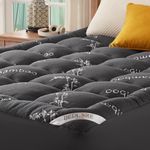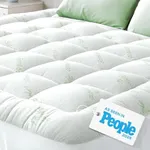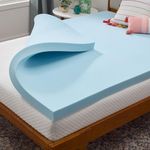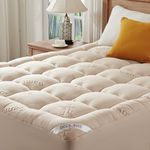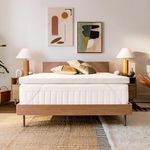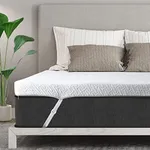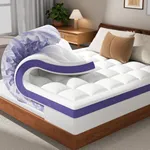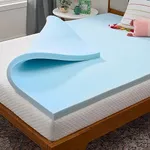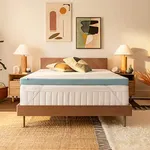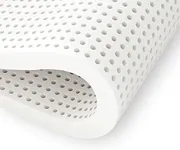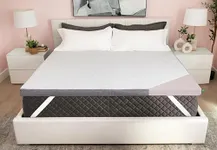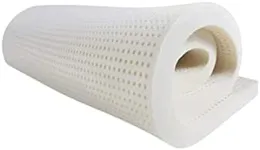Buying Guide for the Best Mattress Toppers
Choosing the right mattress topper can greatly improve the comfort and support of your bed, whether you’re trying to refresh an aging mattress or enhance your sleeping experience. Mattress toppers come in various materials, thicknesses, and firmness levels, all of which impact how you sleep and how well the topper will address your specific needs. When picking a mattress topper, it’s important to consider your sleeping habits, body needs, and any specific problems you’re aiming to solve, like back pain, overheating, or allergies. The right combination of features will ensure a more restful and healthier sleep.MaterialThe material of a mattress topper is crucial because it determines how the topper feels, how well it supports your body, and how it handles issues like heat or allergies. Common materials include memory foam, latex, feather, wool, and down alternative. Memory foam is known for its pressure relief and contouring, which is good if you need support for aches and pains. Latex provides bouncy support and is often preferred for its natural qualities and durability, making it a great pick for those who want an eco-friendly and resilient topper. Feather and down offer softness and plushness but aren’t ideal if you need a lot of support or suffer from allergies. Wool toppers are breathable and regulate temperature well, making them suitable if you’re a hot sleeper. Your sleeping preferences, such as firmness, support, and sensitivity to allergens, should guide your choice of material.
ThicknessThickness affects both the comfort level and support a mattress topper can provide. Toppers usually range from about 1 to 4 inches thick. Thin toppers (1-2 inches) are best if you only want a slight adjustment in firmness or need a little extra cushion. Medium thickness (2-3 inches) makes a noticeable difference, great for improving comfort and minor support issues. Thicker toppers (3-4 inches) provide significant cushioning and support, perfect if your mattress is very firm or you need more pressure relief. The right thickness mainly depends on how much you want to change the feel of your mattress and any specific comfort or support requirements you have.
FirmnessFirmness describes how soft or hard the mattress topper feels. Soft toppers provide more sink-in comfort and are good for side sleepers or people who want to relieve pressure on joints. Medium toppers strike a balance between support and comfort, making them a safe choice for most sleep positions. Firm toppers offer a supportive, less cushy feel, ideal if your mattress is too soft or if you sleep on your back or stomach. Think about your sleep position and whether you need more cushioning or more support to wake up without aches.
Temperature RegulationTemperature regulation refers to how well a topper can keep you cool (or warm) while you sleep. Some materials, like memory foam, tend to retain heat, while others, such as latex, wool, or those infused with cooling gel, help manage temperature better. If you often wake up feeling hot, look for materials or technologies known for staying cool and promoting airflow. For cold sleepers, a warmer topper like memory foam or down might be more comfortable. Your typical sleep temperature should guide your decision here.
Hypoallergenic PropertiesHypoallergenic properties mean the topper resists common allergens such as dust mites, mold, and mildew. This is particularly important for allergy sufferers. Materials like latex, wool, or specially designed synthetics are typically more resistant to allergens, while feather and down can sometimes attract them. If you have allergies or sensitivities, it’s best to select a topper noted for its hypoallergenic nature.
Ease of CleaningEase of cleaning indicates how simple it is to keep your topper hygienic and fresh. Some toppers come with removable, washable covers, while others may require spot cleaning only. If cleanliness is a priority—perhaps due to allergies, children, or pets—look for toppers that either have covers you can easily wash or that are made from materials that resist stains and odors. Your lifestyle and cleaning preferences will determine how important this feature is for you.
